QUEER ADVERTISING From Poppers to Protease Inhibitors By John Lauritsen
Jan. 2000
This talk was delivered at the Queer Studies Symposium, McMaster University, Hamilton, Ontario, Canada, on Saturday, 15 January 2000. (click on images for bigger ones)When I use the word "queer", as in "queer advertising", it is intended to be negative. My leading thesis is that it is queer -- odd and deplorable -- that in the past 30 years much of the advertising in ostensibly gay publications has been for poppers, AZT or the protease inhibitor "cocktails". I shall argue that these drugs are harmful; they have been and continue to be the cause of suffering and death for tens or hundreds of thousands of gay men.
Let's start with the premier gay drug, "poppers". It is curious, that almost all gay men, but very few others, even know what "poppers" are. So it's necessary to begin by defining them.
Poppers in their present form are little bottles containing a liquid mixture of volatile nitrites. When inhaled just before orgasm, poppers seem to prolong the sensation. Poppers facilitate anal intercourse by relaxing the muscles in the rectum and deadening the sense of pain.
From a biochemical standpoint, the volatile or alkyl nitrites (amyl-, butyl-, isobutyl-, propyl-, and other nitrites) are powerful oxidizing agents. If spilled on the skin, they cause severe burns. The liquid is highly flammable; one of the worst fires in San Francisco history occurred when a poppers factory exploded.


Since 15 February 1989 poppers have been a "banned hazardous product" in the United States. It is illegal to manufacture, distribute, import or sell any isobutyl nitrite substance or any consumer product "used for inhaling or otherwise introduced into the body for euphoric or physical effects". The ban is part of the Drug Omnibus Act of 1988.
The initiative for regulating poppers came from the gay community itself. West Hollywood, the gayest city in the world, took the lead in banning poppers. In San Francisco in 1983, lobbying for the regulation of poppers was led by a group of gay doctors, the Bay Area Physicians for Human Rights, together with the Committee To Monitor Poppers, founded in 1981 by gay activist Hank Wilson.
The original poppers were little glass ampules enclosed in mesh, which were "popped" under the nose and inhaled. Manufactured by Burroughs-Wellcome, they contained pharmaceutical amyl nitrite, and were intended for emergency relief of angina pectoris (heart pain). Amyl nitrite was a controlled substance until 1960, when the prescription requirement was eliminated by the Food and Drug Administration (FDA). From 1961 to 1969, a few gay men, primarily those with sadomasochistic proclivities, began using amyl nitrite as a "recreational" drug. The prescription requirement was reinstated by the FDA in 1969.
In 1970, a new industry stepped into the breach, marketing brands of butyl and isobutyl nitrite. One of the most brilliant advertising campaigns of all time commenced. Within only a few years hundreds of thousands of men were persuaded that poppers were an integral part of their "gay identity". The ads conveyed the message that nothing could be butcher or sexier than to inhale noxious chemical fumes. Bulging muscles were linked to a drug that is indisputably hazardous to the health.
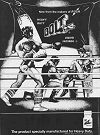
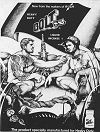
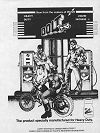
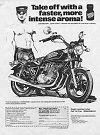
At its peak, the poppers industry was the biggest money- maker in the gay world, grossing upwards of $50 million per year. Gay publications were delighted with the revenues they received from running full-page, four-color ads for the various brands of poppers. In a 1983 letter to the Advocate, poppers manufacturer Joseph F. Miller, President of Great Lakes Products, Inc., boasted he was the "largest advertiser in the Gay press".
For gay men who came out in the '70s, poppers appeared to be as much a part of the gay clone lifestyle as mustaches or flannel shirts. Accessories were marketed: for leather queans, there were little metal inhalers on leather thongs. One magazine had a comic strip entitled "Poppers"; its hero, Billy, was a child-like but sexy blond, whose two main loves in life were sex and poppers.
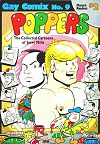
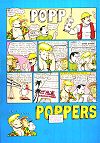
By 1974 the poppers craze was in full swing, and by 1977 poppers were in every corner of gay life. At gay discotheques men could be seen shuffling around in a daze, holding little bottles under the nose. At gay gathering places -- bars, baths, leather clubs -- the poppers miasma was taken for granted.
Some gay men became so addicted to poppers that they snorted nitrite fumes around the clock. For some, poppers became a sexual crutch, without which they were incapable of having sex, even solitary masturbation.
A number of factors help explain why poppers became a mass phenomenon among gay men:
Poppers were legal. So long as they were labelled "room odorizers" and marketed only to gay men, the Food and Drug Administration (FDA) looked the other way.
Poppers were affordable. A bottle could sell for as little as $2.99, a lot less than heroin, cocaine, or whisky.
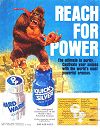
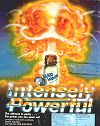
Poppers were assumed to be harmless. The name "poppers" sounds amusing, innocuous. There had been no word in the gay press that poppers were harmful.
But poppers are harmful. They damage the immune system. They injure the lungs. They can cause severe or fatal anemia. Poppers are strongly mutagenic, and have the potential to cause cancer by producing deadly N-nitroso compounds. Poppers can cause death or brain damage from cardiovascular collapse or stroke. Poppers have been used successfully to commit suicide (by drinking) and murder. (The victim was gagged with a sock soaked with poppers.)
There are strong epidemiological links between the use of poppers and the development of AIDS illnesses, especially Kaposi's sarcoma (or KS), an affliction of the blood vessels. In AIDS cases, KS is found almost entirely among gay men who used poppers, not among members of other "risk groups". For at least five years the top AIDS experts, including Robert Gallo, have known that HIV is not the cause of KS. This was admitted publicly at a 1994 meeting of the National Institute of Drug Abuse. (see ref..)
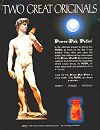
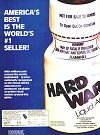
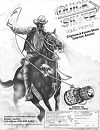
At present, the nitrites-KS hypothesis is as strong as any, from the standpoints of both epidemiology and biochemistry: poppers are a potent mutagen and affect the blood vessels. It is suggestive, that many gay men who used poppers developed KS of the upper lips, nose, and lungs -- the route of poppers inhalation.
Beginning in 1981 San Francisco activist Hank Wilson, founder of the Committee to Monitor Poppers, regularly sent out packets of medical reports to the gay press. These were ignored. In 1982 a scientist sent a letter to the Advocate, describing research which demonstrated that amyl nitrite strongly suppresses the immune systems of mice. The Advocate's editor, the late Robert McQueen, said: "We're not interested." Still in 1982, the Bay Area Reporter (BAR) in San Francisco ran the longest editorial in its entire history, attacking Hank Wilson for criticizing poppers. In 1983, at the request of a poppers manufacturer, the Advocate ran a series of advertisements ("Blueprint For Health") which falsely claimed that government studies had exonerated poppers from any connection to AIDS.
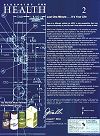
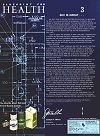
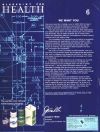
For most of the gay press advertising dollars were more important than the lives of gay men. Among the few exceptions were the New York Native and Christopher Street, which ran articles on the dangers of poppers. For doing so they were attacked by the late Nathan Fain, "health critic" of the Advocate.
I began collaborating with Wilson in 1983. We published a series of pamphlets and, in 1986, a little book, Death Rush: Poppers & AIDS. In 1983 I spoke out publicly against poppers for the first time, at a meeting of the New York Safer Sex Committee. I was savagely attacked on the spot by a gay physician (now dead from "AIDS"), who waved his arms and screamed at me like a maniac. That evening I received a death threat. The phone rang. It was a woman who said, coldly and professionally: "Don't be surprised if you don't wake up in the morning. [CLICK]"
Now it's 2000, eleven years after poppers were outlawed, and not much has changed. Poppers are no longer advertised in the American gay press, but they are readily available and sold over the Internet. The largest circuit party of all, the Black & Blue, held annually in Montreal, has "Zee-Best Leather Cleaner" as a major sponsor. (I would not recommend using this product on your leather jacket.)
Banning poppers isn't the answer. Our task is to get the word out, that poppers really are dangerous. We have to counteract the disinformation that has been disseminated -- not only by the poppers industry, but also by government agencies and AIDS organizations.
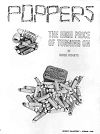
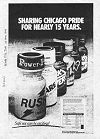
I'll close the poppers portion of my talk with three words: Don't use poppers!
Gay publications in the U.S. no longer carry ads for poppers. Their place has been taken by AIDS commodities: condoms, viatical settlement companies, funeral services, and drugs. The most prominent advertising in the late '80s, the "Living With HIV" campaign, promoted the drug AZT (also known as Retrovir and zidovudine). Now we see ads for protease inhibitors, part of the drug "cocktails" that are touted as HAART ("highly active anti- retroviral therapy").
In a typical ad -- for Crixivan -- a young man is shown clinging to the sheer face of a cliff, ready to plunge thousands of feet to his death; the header says: "In the battle against HIV..." On the opposite page the same young man is standing on a level place, calmly surveying the vista below; the header says: "there's a change in outlook." The change is from anxiety at imminent peril to calmness and hope, thanks to Crixivan. The third page of the ad consists of fine print, mostly devoted to the drug's toxicities.
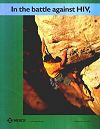
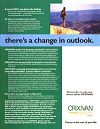
However, overt advertising plays only a small role in the promotion of the current AIDS drugs. Far more important are the public relations (PR) firms, which do their work surreptitiously. (On this topic I recommend John Stauber's book, Toxic Sludge Is Good For You: Lies, Damn Lies, and the Public Relations Industry).
The world's largest PR firm, Burson-Marsteller has for clients SmithKline, Eli Lilly, Pfizer, and Glaxo-Wellcome -- and the giant pharmaceutical firms undoubtedly use other PR firms as well. The PR campaign on behalf of the protease inhibitor drugs, which began in 1996, represents a triumph for the industry. Within a short time almost everyone came to believe that AIDS deaths were falling because of the new drugs. The media were filled with "Lazarus" stories: thanks to the new HAART cocktails men would get up from their deathbeds to return to work, play tennis, or perhaps climb mountains. (Stories that contradicted this propaganda -- healthy people who took the drugs and then died of liver failure -- were rigorously suppressed.)
There is no basis in reality for the claim that protease inhibitors have reduced AIDS deaths. A sharp drop in new "AIDS diagnoses" and in "AIDS" deaths began several years before the protease inhibitors were put on the market. Further, according to American "AIDS expert" Anthony Fauci of NAIAD, no more than 10% of the eligible "HIV-positive" population have ever taken a protease inhibitor, and half of them must stop taking the drugs because they can't tolerate the toxicities. Therefore, the protease inhibitors are absurdly being given credit for reducing the death rate among the 95% of eligible HIV-positive people who are no longer taking them, or who never did in the first place. Further, the protease inhibitor propaganda -- instant recovery, immediate drop in AIDS deaths -- contradicts a basic tenet of HIV mythology: that a long latency period (from 8 to 12 or even 15 years) lies between HIV infection and the appearance of "AIDS" symptoms; that HIV is a slow virus (lentivirus), which takes a long, long time to do anything. Finally, there are objectively healthy people who took the cocktails and then died before developing one of the 29 "AIDS-indicator" diseases; these "deaths before diagnosis" are not counted as "AIDS deaths".
In a leading hospital in Massachusetts, deaths from liver failure caused by protease inhibitor drugs are the leading cause of death among those with an "HIV-positive" diagnosis. Many of the victims had no symptoms before taking the drugs.
In fact, no clinical study has ever demonstrated that the protease inhibitor cocktails improve the health or survival rates of those taking them. The success of the drugs is gauged entirely through two surrogate markers, CD4 counts and the "viral load" test, both of which are worthless.
Protease inhibitors are entirely harmful. They attack the liver, kidneys, and pancreas. They cause severe headaches, diarrhea, nausea and vomiting. They damage the nerves. They cause muscular pain and atrophy. They cause diabetes and high blood pressure, strokes and heart attacks.
The effects are not pretty. The arms and legs waste away, and the face begins to look like a death's head. Veins protrude on the limbs and side of the face. The eyes look glassy. Fat accumulates on the belly ("Crix belly") and the back of the neck ("buffalo hump"). The complexion acquires an unhealthy dark red hue, and sometimes, as the liver and kidneys are failing, a grayish putty color.
One drug found in many cocktails is AZT, a highly toxic drug, which was approved by the FDA on the basis of fraudulent research. The drug's biochemical mechanism of action is simple: it kills cells by terminating DNA synthesis, the life process itself. And it kills people; 94% of all AIDS deaths in the United States occurred after AZT was approved for marketing in 1987.
In the American gay press, Christopher Street and the New York Native were alone in criticizing the premier AIDS drug. The rest of the gay press carried the "Living With HIV" ads and suppressed all information that was not favorable to AZT -- just as a decade before they had carried the ads for poppers and suppressed information about their toxicities.
We gay men are in a bad situation indeed, if what is supposed to be our press is controlled by those who are indifferent or even hostile to our welfare. Why were these deadly drugs foisted on us? The profit motive, of course, but I think the main reason lies in hatred of gay men, including self-hatred. The belief that men who have sex with each other are worthy of death is not new; it goes back to a taboo formulated 2500 years ago by the Levites, the priestly class of the tribe of Judah, as part of their Holiness Code. The history and ramifications of that horrible taboo are the core of my latest book, A Freethinker's Primer of Male Love.
Gay men must recognize the war that is being waged against us, and must fight back. We must stop the poisoning of our brothers. We must defend Free Speech, with no holds barred. Somehow, we must reclaim, or establish from scratch, an honest and healthy way of communicating with each other.
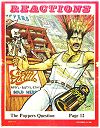
John Lauritsen is a Survey Analyst, and covered the AIDS war as a Journalist for the New York Native. Lauritsen is the author of 'The AIDS War; Propaganda, profiteering and genocide from the medical-industrial complex' and 'Poison by Prescription; The AZT Story'. He is the co-editor of 'The AIDS Cult'.